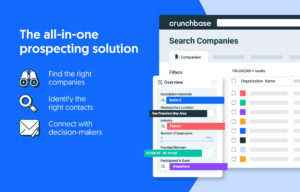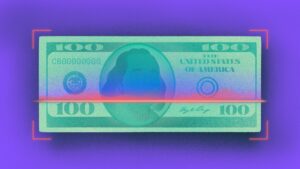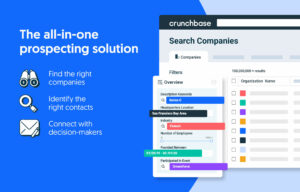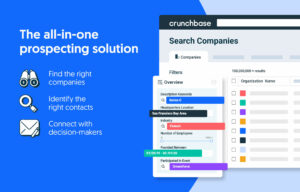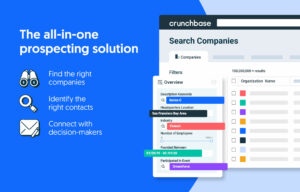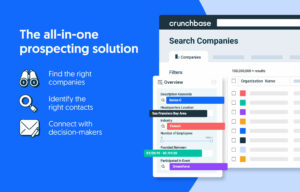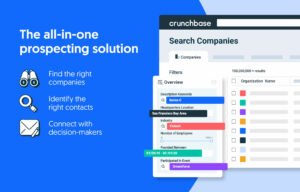Close to half of the 171 companies that went public in 2021 at billion-dollar-plus valuations and are still trading are now worth less than $500 million. Just 40% of 2021’s IPOs are worth more than $1 billion.
The figures, from an analysis of The Crunchbase Billion-Dollar Exits Board, reveal that even as the IPO markets show signs of life, startups eyeing a public-market debut will face intense headwinds.
Companies are getting ready to test the market’s interest in new technology listings, as evidenced by Arm Holdings’ IPO filing on Monday and Instacart’s expected filing.
“Our entire ecosystem is based upon the flywheel of liquidity,” said Larry Aschebrook, managing partner at Chicago-based growth investor G Squared, which counts a number of late-stage unicorns in its portfolio, including Instacart, Bolt, Snyk and Flexport.
The Crunchbase Billion-Dollar Exits Board tracks U.S. companies that went public in recent years at or above that threshold value. Our analysis of the billion-dollar exit market year over year highlights how the market has changed, and shows many of those companies are now trading well below their IPO price — sometimes drastically so.
U.S. billion-dollar exits
An analysis of Crunchbase data shows that in the peak market of 2021, there were 182 billion-dollar private companies that listed on the public markets in the U.S., that’s compared to 51 companies debuting a year earlier in 2020.
Billion-dollar SPAC listings caught up with traditional IPOs in 2021, when there were 93 IPOs and 83 blank-check deals. A year earlier, traditional IPOs dominated with 34 initial public offerings, compared to 16 SPACs.
Exits in 2021 peaked across all exit types above $1 billion, although billion-dollar M&A counts were comparable to 2020.
In the last 18 months, very few venture-backed companies have exited above $1 billion, unless you count SPAC listings. SPACs again dominated in 2022, which in part reflects dealmaking that was set up in 2021.
SPACs have fallen in 2023, with just four such deals so far this year.
‘Rewarding safety’
The public markets have gone up in value but the increase has concentrated in the leading technology companies. The rise hasn’t carried through, however, for many newer tech listings such as Roblox, Lucid Motors and Marqeta.
“I think that public market investors are rewarding safety,” said Aschebrook. “It is an easier decision to allocate capital to a massive business like a Meta or Alphabet.”
The three most highly valued companies in the public markets that went public in 2021 are Rivian, Coinbase and Roblox. Each is down significantly from its IPO price.
Of the companies that went public in 2021 and are still public companies, 45% are worth less than $500 million, an analysis of the Exits Board shows.
Roughly 13% are worth more than $500 million but less than $1 billion. And 55 companies, or 32%, are valued at or above $1 billion but less than $5 billion.
Only 16 companies, around 9%, are worth $5 billion or more.
‘New reality’
About 50% of the 2020 listings now have market caps below $1 billion.
For the 2022 listings, a higher proportion — 78% — are valued below $1 billion.
For a period in 2022, the overall stock market was dipping around 1%-2% per day, but some of the newer tech listings were declining much more precipitously — sometimes plummeting as much as 20% in a single trading day, noted Ran Ben-Tzur, a partner at law firm Fenwick & West who advises technology and life sciences companies planning to list on the public markets.
The management teams and boards at some of those companies felt at the time that their companies were being undervalued by the market, he said.
“In 2023, I think people have adjusted to a new reality, and they sort of now understand where the market is valuing them.”
Related Reading:
Methodology
The Crunchbase Billion-Dollar Exits Board includes exits by U.S. venture-backed companies valued at $1 billion or more, starting in 2020.
Companies are included on this list based on their IPO value or M&A deal price. After exiting, a company’s value could fall below $1 billion or a company could be delisted. We still keep the company on this list based on the date and its value upon going public. Should a planned merger be canceled, the deal will be removed from this list.
We only include a company’s first exit. For example, qualtrics was acquired in 2018 by SAP for $8 billion. Its subsequent IPO in January 2021 is not included on this list as the company had already exited.
All funding values are given in U.S. dollars unless otherwise noted. Crunchbase converts foreign currencies to U.S. dollars at the prevailing spot rate from the date funding rounds, acquisitions, IPOs and other financial events are reported. Even if those events were added to Crunchbase long after the event was announced, foreign currency transactions are converted at the historic spot price.
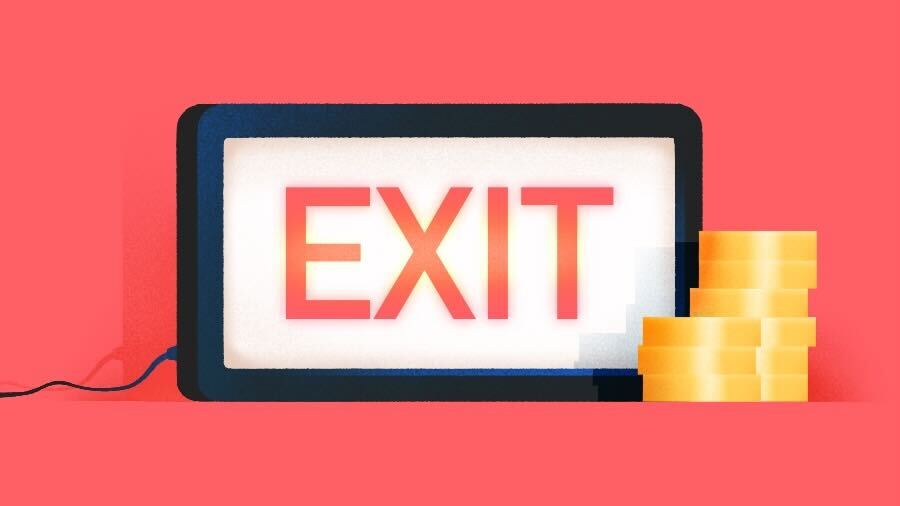

Stay up to date with recent funding rounds, acquisitions, and more with the Crunchbase Daily.
Startups and venture capitalists are likely to view Instacart and Klaviyo as bellwethers for a startup IPO market rebound.
This week made us check the calendar to make sure we aren’t still living in the free-money days of 2021. Eight rounds this week topped nine figures...
- SEO Powered Content & PR Distribution. Get Amplified Today.
- PlatoData.Network Vertical Generative Ai. Empower Yourself. Access Here.
- PlatoAiStream. Web3 Intelligence. Knowledge Amplified. Access Here.
- PlatoESG. Automotive / EVs, Carbon, CleanTech, Energy, Environment, Solar, Waste Management. Access Here.
- PlatoHealth. Biotech and Clinical Trials Intelligence. Access Here.
- ChartPrime. Elevate your Trading Game with ChartPrime. Access Here.
- BlockOffsets. Modernizing Environmental Offset Ownership. Access Here.
- Source: https://news.crunchbase.com/public/2021-ipo-companies-went-public-valuation-analysis-2023/
- :has
- :is
- :not
- :where
- $1 billion
- $UP
- 16
- 2018
- 2020
- 2021
- 2022
- 2023
- 51
- a
- above
- acquired
- acquisitions
- across
- added
- Adjusted
- After
- again
- All
- allocate
- already
- Although
- an
- analysis
- and
- announced
- ARE
- around
- AS
- At
- based
- BE
- being
- below
- Billion
- Bloomberg
- board
- business
- but
- by
- Calendar
- canceled
- capital
- capitalists
- caps
- carried
- caught
- changed
- check
- Companies
- company
- Company’s
- comparable
- compared
- Concentrated
- converted
- could
- CrunchBase
- currencies
- Currency
- daily
- data
- Date
- day
- Days
- deal
- Deals
- debut
- debuting
- decision
- Declining
- does
- dollars
- down
- drastically
- each
- Earlier
- easier
- ecosystem
- end
- Entire
- Ether (ETH)
- Even
- Event
- events
- evidenced
- example
- Exit
- Exiting
- exits
- Face
- Fall
- Fallen
- far
- few
- Figures
- financial
- First
- For
- foreign
- foreign currency
- four
- from
- funding
- funding rounds
- getting
- given
- going
- Growth
- had
- Half
- Have
- he
- headwinds
- higher
- highlights
- highly
- historic
- How
- However
- HTTPS
- i
- if
- in
- include
- included
- includes
- Including
- Increase
- initial
- instacart
- interest
- investor
- Investors
- IPO
- IPOs
- ITS
- January
- January 2021
- jpg
- just
- Keep
- Last
- Law
- leading
- less
- Life
- Life Sciences
- like
- likely
- Liquidity
- List
- Listed
- Listings
- living
- Long
- M&A
- made
- make
- management
- managing
- managing partner
- many
- Market
- Market Caps
- Markets
- massive
- mean
- Merger
- million
- months
- more
- most
- much
- Nasdaq
- New
- newer
- noted
- now
- number
- of
- Offerings
- on
- only
- or
- Other
- otherwise
- our
- over
- overall
- part
- partner
- Peak
- People
- per
- period
- planned
- planning
- plato
- Plato Data Intelligence
- PlatoData
- portfolio
- price
- private
- Private Companies
- proportion
- public
- public companies
- Public Market
- Rate
- Reading
- ready
- Reality
- rebound
- recent
- Recent Funding
- reflects
- Removed
- Reported
- reveal
- rewarding
- Rise
- Roblox
- rounds
- s
- Safety
- Said
- SCIENCES
- set
- should
- show
- Shows
- significantly
- Signs
- single
- So
- so Far
- some
- sometimes
- SPAC
- SPACs
- Spot
- Starting
- startup
- Startups
- stay
- Still
- stock
- stock market
- subsequent
- such
- sure
- teams
- tech
- Technology
- technology companies
- test
- than
- that
- The
- their
- Them
- There.
- they
- think
- this
- this week
- this year
- those
- three
- threshold
- Through
- time
- to
- topped
- Trading
- traditional
- Transactions
- types
- u.s.
- U.S. Dollars
- understand
- unicorns
- upon
- us
- Valuations
- value
- valued
- Values
- valuing
- venture
- very
- View
- was
- we
- week
- WELL
- went
- were
- What
- when
- which
- WHO
- will
- with
- worth
- year
- years
- you
- zephyrnet

